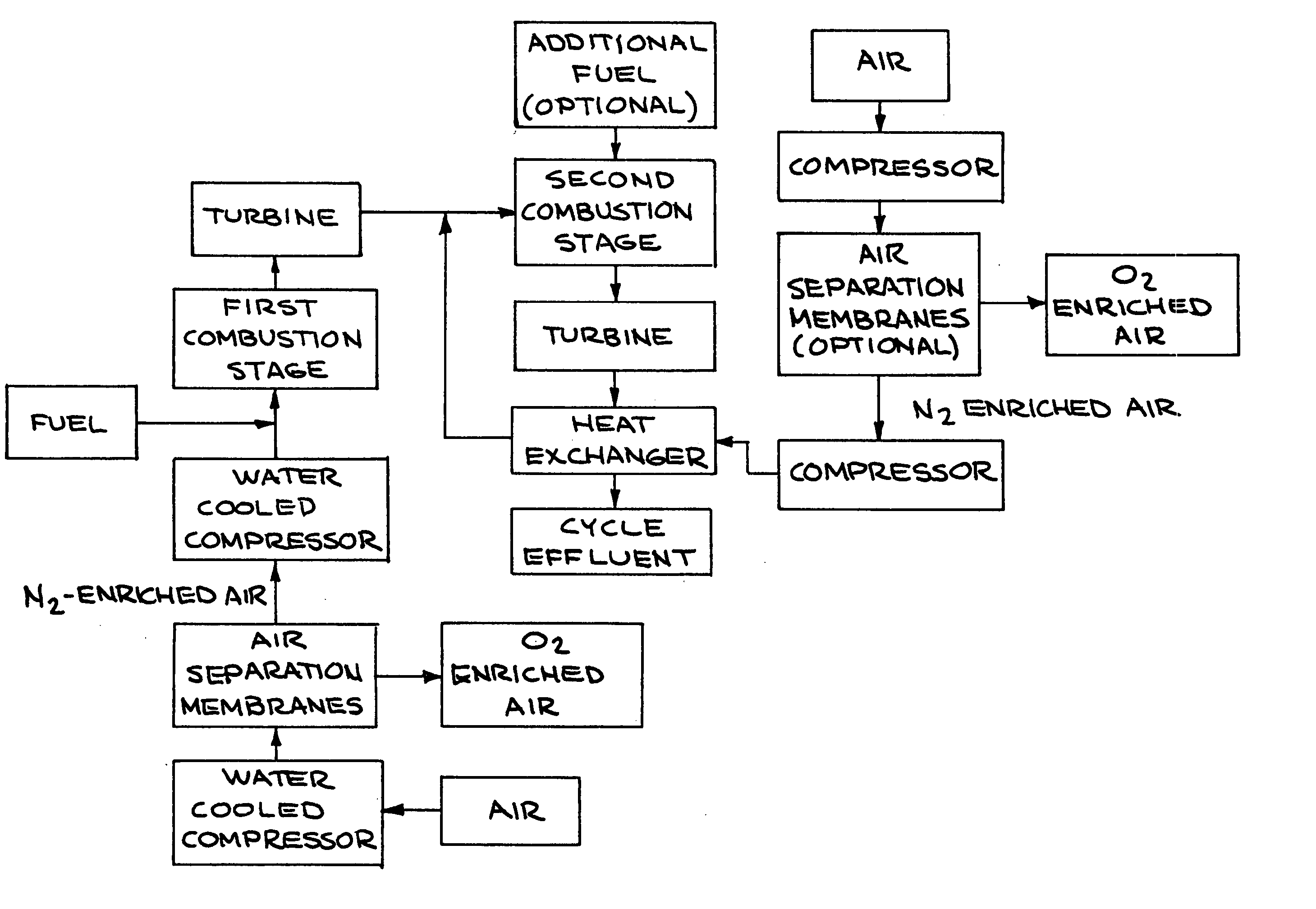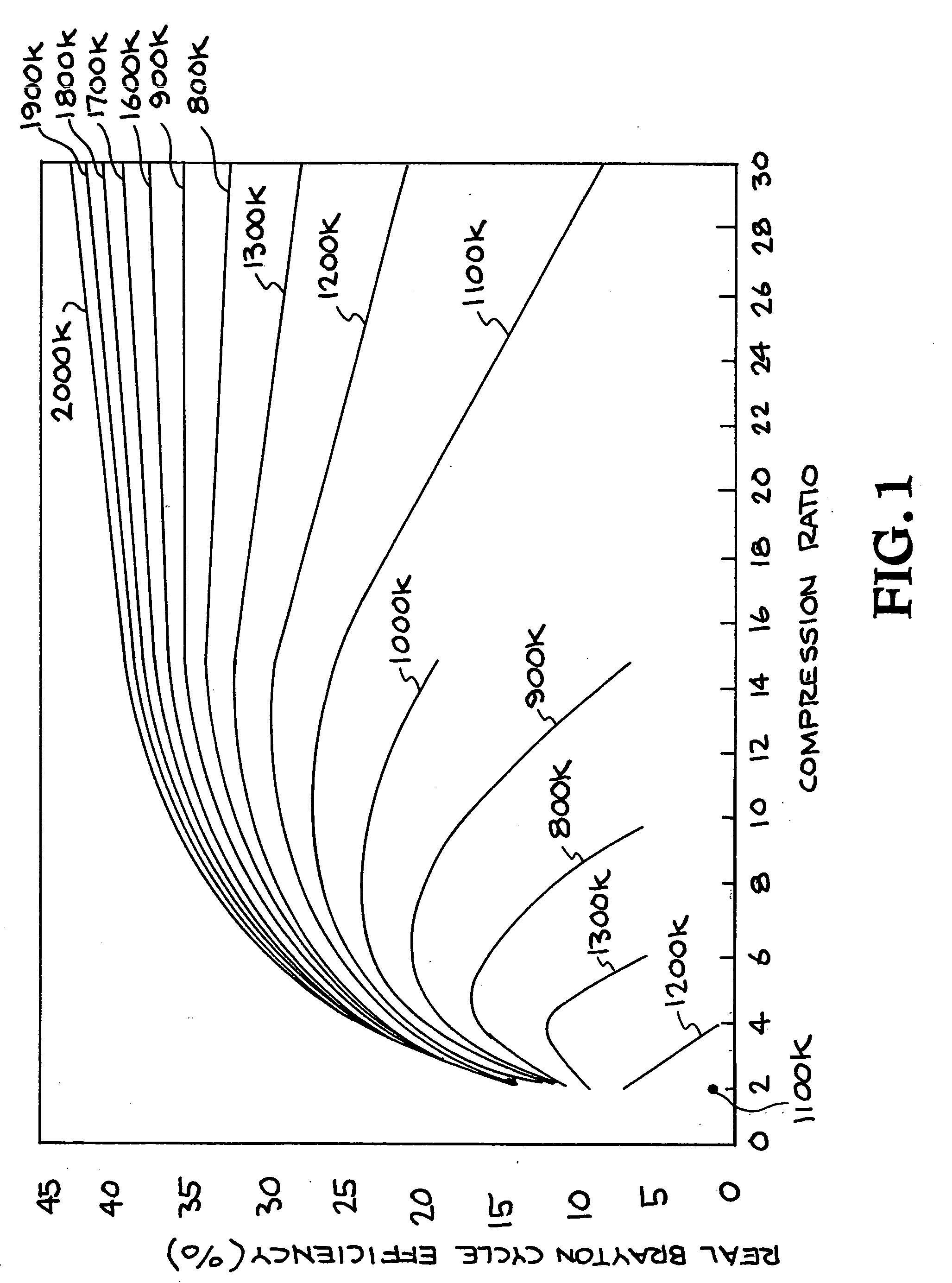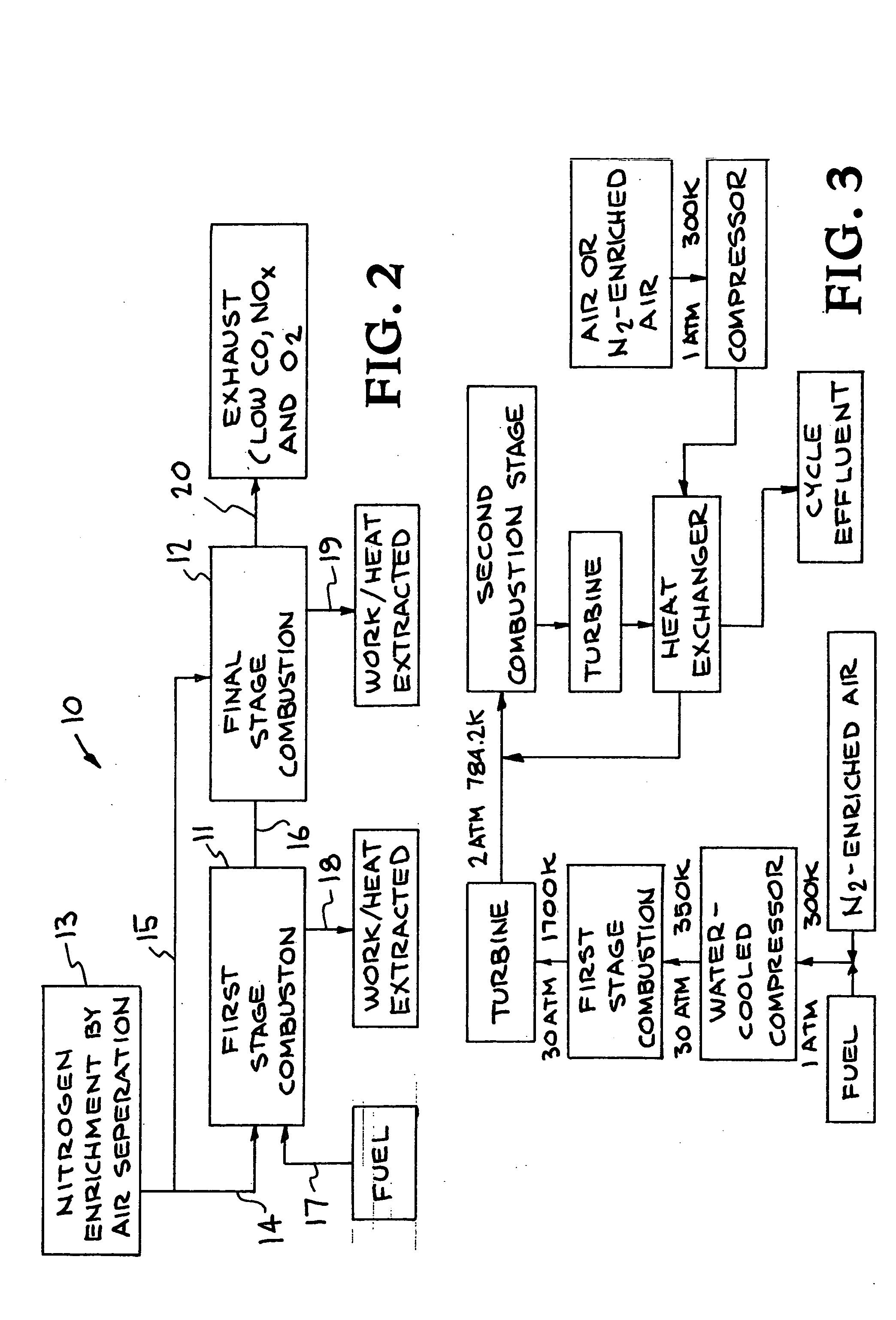Multi-stage combustion using nitrogen-enriched air
a technology of nitrogen-enriched air and combustion system, which is applied in the direction of solid fuel combustion, machines/engines, lighting and heating apparatus, etc., can solve the problems of not meeting the impending requirements of greatly reduced no/sub>x/sub>, the maximum operational temperature of most combustion system, especially continuous flow one, is limited, etc., to reduce corrosive and oxidative gases, increase fuel efficiency, and reduce pollution. exhaust emissions
- Summary
- Abstract
- Description
- Claims
- Application Information
AI Technical Summary
Benefits of technology
Problems solved by technology
Method used
Image
Examples
Embodiment Construction
The present invention is directed to multi-stage combustion using nitrogen-enriched air. The combustion approach of this invention results in lower pollutant emissions, lower corrosion rates of combustion and heat-transfer equipment, and comparable or improved efficiencies as compared to the typical combustion process used in boilers, burners, turbines, and internal combustion engines. This combustion approach combines the technologies of stage-combustion with the use of nitrogen-enriched air for the oxidant stream in one or more of the combustion stages.
The high oxidant loading in the effluent from many combustion processes facilitates large corrosion rates in the related combustion and process equipment, especially the equipment that is in contact with high-temperature effluent. The high oxidant concentration typically results from the single-stage burning of fuel “lean” (more than the stoichiometric amount of air) to control the combustion temperature, the corrosion rate, and ...
PUM
 Login to View More
Login to View More Abstract
Description
Claims
Application Information
 Login to View More
Login to View More - R&D
- Intellectual Property
- Life Sciences
- Materials
- Tech Scout
- Unparalleled Data Quality
- Higher Quality Content
- 60% Fewer Hallucinations
Browse by: Latest US Patents, China's latest patents, Technical Efficacy Thesaurus, Application Domain, Technology Topic, Popular Technical Reports.
© 2025 PatSnap. All rights reserved.Legal|Privacy policy|Modern Slavery Act Transparency Statement|Sitemap|About US| Contact US: help@patsnap.com



